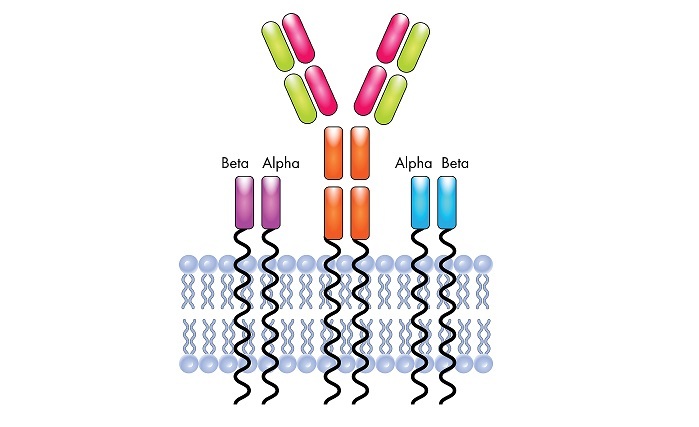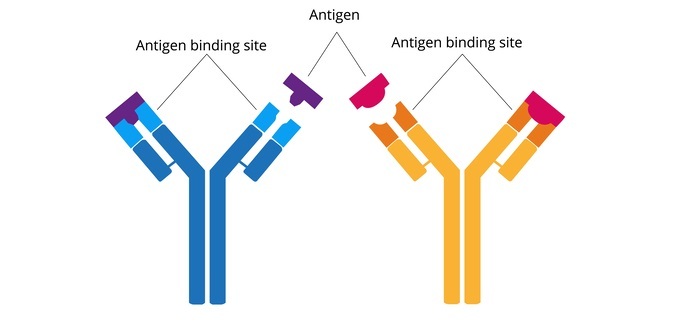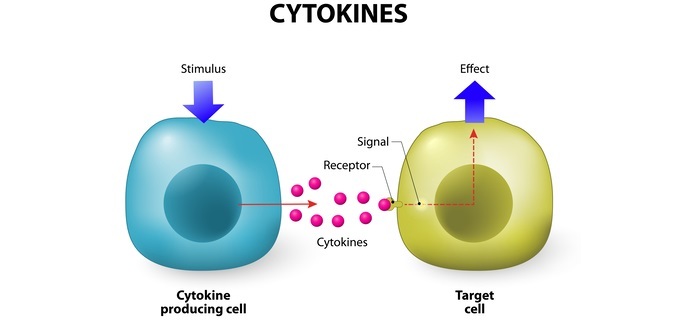
 Data Structure
Data Structure Networking
Networking RDBMS
RDBMS Operating System
Operating System Java
Java MS Excel
MS Excel iOS
iOS HTML
HTML CSS
CSS Android
Android Python
Python C Programming
C Programming C++
C++ C#
C# MongoDB
MongoDB MySQL
MySQL Javascript
Javascript PHP
PHP
- Selected Reading
- UPSC IAS Exams Notes
- Developer's Best Practices
- Questions and Answers
- Effective Resume Writing
- HR Interview Questions
- Computer Glossary
- Who is Who
Structure of B-Cell Receptor and Its Signaling Pathways
Introduction
B-cell receptors (BCRs) are complex protein structures found on the surface of B-lymphocytes, which are a type of white blood cell responsible for the production of antibodies. The BCR plays a crucial role in the immune system, enabling the B-cell to recognize and respond to foreign antigens.
When an antigen binds to the BCR, it triggers a signaling pathway that leads to the activation of the B-cell and the production of specific antibodies. The structure of the BCR is composed of two main components ?
The antigen-binding site, which is made up of a heavy and a light chain, and
The intracellular signaling domain, which is responsible for activating downstream signaling pathways.

Below we shall explore the structure of the BCR in detail and its signaling pathways.
Structure of B-Cell Receptor
The BCR is a transmembrane protein that is composed of a heavy chain, a light chain, and two associated signaling molecules: Ig-alpha and Ig-beta.
The heavy and light chains are arranged in a Y-shape and are linked by disulfide bonds.
The two arms of the Y-shaped molecule make up the antigen-binding site, which is responsible for recognizing specific antigens.

The antigen-binding site is formed by the variable regions of the heavy and light chains, which are responsible for the specificity of the BCR.
These variable regions are highly diverse, allowing the BCR to recognize a wide range of antigens.
The variable regions of the heavy and light chains are encoded by genes that undergo somatic recombination during B-cell development, leading to the generation of a vast repertoire of unique BCRs.
The constant regions of the heavy and light chains are responsible for the effector functions of the BCR, such as complement fixation and antibody-dependent cell-mediated cytotoxicity.
The constant regions are also involved in the assembly and stability of the BCR.
The intracellular signaling domain of the BCR is composed of two signaling molecules, Ig-alpha, and Ig-beta.
These molecules are responsible for activating downstream signaling pathways when the BCR binds to an antigen.
The intracellular domains of Ig-alpha and Ig-beta contain immunoreceptor tyrosine-based activation motifs (ITAMs), which are phosphorylated by the kinase Lyn following BCR engagement.

Signaling Pathways of B-Cell Receptor
The signaling pathways of the BCR are initiated by the phosphorylation of ITAMs on Ig-alpha and Ig-beta by the kinase Lyn.
This phosphorylation leads to the recruitment and activation of downstream signaling molecules, including Syk, Btk, and PLC-gamma2.
Syk is a cytoplasmic tyrosine kinase that is critical for the activation of downstream signaling pathways. Following its recruitment to the phosphorylated ITAMs, Syk becomes activated and phosphorylates a number of downstream targets, including the adapter protein BLNK and the scaffold protein SLP-65.
BLNK is an adapter protein that plays a crucial role in the activation of downstream signaling pathways. Following phosphorylation by Syk, BLNK recruits and activates a number of downstream signaling molecules, including PLC-gamma2 and Vav.
PLC-gamma2 is a phospholipase that is activated following its recruitment to the phosphorylated ITAMs on Ig-alpha and Ig-beta. Activated PLC-gamma2 cleaves phosphatidylinositol 4,5-bisphosphate (PIP2) to produce inositol 1,4,5-trisphosphate (IP3) and diacylglycerol (DAG).
IP3 leads to the release of calcium ions from intracellular stores, while DAG activates downstream signaling pathways, including the activation of protein kinase C (PKC).
Vav is a guanine nucleotide exchange factor that is recruited to the B CR following its phosphorylation by Syk and its interaction with BLNK. Vav activates downstream signaling pathways by promoting the exchange of GDP for GTP on Rho family GTPases, including Rac and Cdc42.
This leads to the activation of downstream effector molecules, including the actin cytoskeleton and MAP kinases.
The BCR signaling pathway also leads to the activation of the NF-kappaB and MAP kinase signaling pathways. NF-kappaB is a transcription factor that is activated downstream of the BCR and plays a critical role in the regulation of immune responses.
The MAP kinase pathway is involved in the regulation of cell proliferation, differentiation, and apoptosis.
Overall, the signaling pathways of the BCR are complex and involve the activation of a number of downstream signaling molecules. The ultimate outcome of BCR signaling is the activation of the B-cell and the production of specific antibodies against the antigen.
Clinical Significance
The structure of the B-cell receptor (BCR) and its signaling pathways have significant clinical implications. The BCR plays a crucial role in the immune response, as it is responsible for recognizing and binding to specific antigens, leading to the activation of the B-cell and the production of specific antibodies. Dysregulation of BCR signaling can lead to a variety of autoimmune diseases and malignancies.
Autoimmune Diseases
Autoimmune diseases occur when the immune system attacks self-antigens, leading to tissue damage and inflammation. Dysregulation of BCR signaling has been implicated in the development of a variety of autoimmune diseases, including systemic lupus erythematosus (SLE), rheumatoid arthritis (RA), and multiple sclerosis (MS).
In SLE, autoantibodies against self-antigens, including DNA, histones, and ribonucleoproteins, are produced. Dysregulation of BCR signaling can lead to the survival and activation of autoreactive B-cells, leading to the production of autoantibodies and the development of SLE.
In RA, autoantibodies against citrullinated peptides are produced. Dysregulation of BCR signaling can lead to the survival and activation of autoreactive B-cells, leading to the production of autoantibodies and the development of RA.
In MS, autoantibodies against myelin proteins are produced. Dysregulation of BCR signaling can lead to the survival and activation of autoreactive B-cells, leading to the production of autoantibodies and the development of MS.
Malignancies
Dysregulation of BCR signaling has also been implicated in the development of malignancies, including B-cell lymphomas and leukemias. B-cell malignancies are characterized by the uncontrolled proliferation and survival of B-cells, leading to the production of abnormal antibodies and the suppression of the immune system.
Chronic lymphocytic leukemia (CLL) is a B-cell malignancy characterized by the clonal expansion of mature B-cells. Dysregulation of BCR signaling has been implicated in the development and progression of CLL, as activating mutations in BCR signaling molecules, including Btk and PLC-gamma2, have been identified in CLL patients.
Diffuse large B-cell lymphoma (DLBCL) is a B-cell malignancy characterized by the proliferation of large B-cells. Dysregulation of BCR signaling has also been implicated in the development and progression of DLBCL, as activating mutations in BCR signaling molecules, including CD79B and MYD88, have been identified in DLBCL patients.

Targeted Therapy
Targeting BCR signaling has emerged as a promising therapeutic strategy for the treatment of autoimmune diseases and malignancies. Inhibitors of BCR signaling molecules, including Btk, Syk, and PI3K, have been developed and are being evaluated in clinical trials for the treatment of B-cell malignancies, including CLL and DLBCL.
In CLL, the Btk inhibitor ibrutinib has been approved for the treatment of CLL patients, and the Syk inhibitor fostamatinib is being evaluated in clinical trials for the treatment of CLL and other B-cell malignancies.
In DLBCL, the Btk inhibitor acalabrutinib and the PI3K inhibitor idelalisib are being evaluated in clinical trials for the treatment of DLBCL patients.

